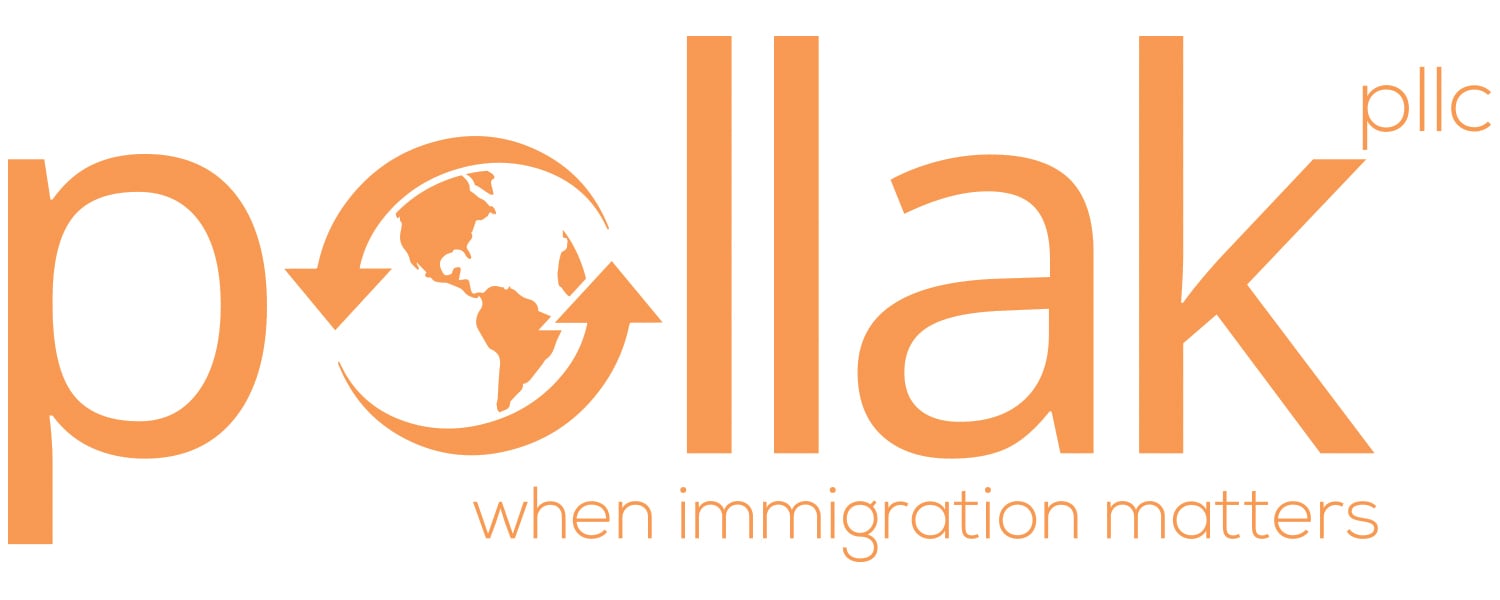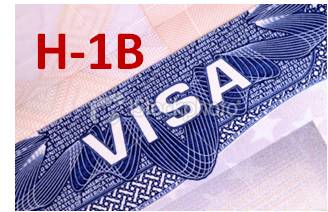
Navigating the U.S. immigration system is no small task, especially when your future depends on selecting the right employment-based visa. Whether you're an accomplished academic, a skilled professional, or a U.S. employer looking to fill a critical position, understanding the distinctions between the EB-1, EB-2, and EB-3 visa categories is essential. These three visa types serve different purposes, and selecting the right path can significantly affect your long-term immigration success.
At Pollak PLLC, we help clients make informed, strategic decisions about their immigration status every day. As a trusted Pollak PLLC business immigration attorney, we guide applicants and employers through the complex application process—explaining how these visas differ and what they require.
What Makes Pollak PLLC Different?
When your immigration future is on the line, you need more than a generic law firm—you need a trusted legal partner who knows how to get results.
Decades of Experience in Employment-Based Immigration
Pollak PLLC brings over 27 years of exclusive experience in immigration law. Our firm has successfully represented professionals, businesses, researchers, and multinational executives in thousands of employment-based immigration matters. This depth of experience means we know the nuances of each visa type and how to avoid the missteps that delay or derail applications.
Personalized Attention From Senior-Level Counsel
Every client receives direct attention from Managing Attorney Karen-Lee Pollak. Unlike large firms that often delegate to junior staff, Pollak PLLC ensures that your case is handled by seasoned professionals who understand the stakes. We listen closely, develop tailored legal strategies, and stay involved from start to finish.
National Reach, Boutique-Level Support
With offices in Dallas and Fort Lauderdale and clients across the United States and abroad, Pollak PLLC offers nationwide immigration solutions with the care and responsiveness of a boutique practice. Our commitment to proactive, transparent communication sets us apart.
EB-1 Visa: Priority Workers
The EB-1 visa is the highest preference category for employment-based immigration. It is reserved for individuals who are leaders in their field, including professionals with extraordinary ability, outstanding academics, and top-level executives. Working with an experienced eb1 visa lawyer can significantly improve your chances of success, especially when building evidence of sustained acclaim or executive qualifications.
Who Qualifies for the EB-1 Visa?
- Extraordinary Ability Applicants: Must show sustained national or international acclaim through a one-time achievement (like a Nobel Prize) or documented recognition in their field.
- Outstanding Professors and Researchers: Must demonstrate international recognition, at least three years of experience, and a job offer for a tenure-track or comparable research position.
- Multinational Managers and Executives: Must have worked abroad in a managerial or executive role for at least one year within the past three years and be entering the U.S. to continue working for the same employer or a related entity.
Key Benefits of the EB-1 Visa
- No Labor Certification Required: This saves time and reduces the burden on both the applicant and employer.
- Faster Processing Times: EB-1 petitions are prioritized, which can mean a quicker path to permanent residency.
- Dual Intent Allowed: Applicants can seek permanent residency without jeopardizing their nonimmigrant status.
EB-2 Visa: Advanced Degree Professionals and Persons of Exceptional Ability
The EB-2 visa offers a strong option for professionals with advanced qualifications and individuals with exceptional ability in fields that benefit the U.S. economy. A qualified eb2 visa lawyer can help you determine whether you qualify for the National Interest Waiver or need to pursue labor certification.
Who Qualifies for the EB-2 Visa?
- Advanced Degree Professionals: Applicants must have a job that requires an advanced degree (master's or higher), or a bachelor's degree plus five years of progressive experience.
- Exceptional Ability Applicants: Must demonstrate a level of expertise significantly above that normally encountered in their profession.
- National Interest Waiver (NIW): Applicants can request a waiver of the job offer and labor certification if their work benefits the national interest.
Benefits and Considerations
- Labor Certification May Be Required: Unless applying for an NIW, applicants must go through the PERM labor certification process.
- Faster Than EB-3: While not as quick as the EB-1, EB-2 visas typically have shorter wait times than EB-3 visas.
- Flexibility Through NIW: Those applying under the NIW can self-petition, offering more control over their application.
EB-3 Visa: Skilled Workers, Professionals, and Other Workers
The EB-3 visa provides opportunities for a broader range of workers, including skilled tradespeople and those with less formal education. Our team includes a dedicated eb3 visa lawyer who helps clients navigate labor certification, timing issues, and job eligibility under this category.
Who Qualifies for the EB-3 Visa?
- Skilled Workers: Must have at least two years of job experience or training.
- Professionals: Must have a U.S. bachelor's degree or its foreign equivalent.
- Other Workers: Jobs requiring less than two years of training or experience, such as entry-level or manual labor roles.
Challenges and Advantages
- Labor Certification Required: All EB-3 applications require PERM labor certification.
- Longer Wait Times: Due to high demand and lower priority, EB-3 visa holders often face delays in green card availability.
- Broader Eligibility: Includes a wider range of industries and job types, from healthcare to construction.
Comparing EB-1, EB-2, and EB-3: Key Differences
Deciding which employment-based visa best fits your qualifications and goals requires more than a checklist—it calls for a clear understanding of how these categories function in real-world scenarios. Each preference level offers different benefits, requirements, and long-term immigration potential.
Eligibility and Documentation Requirements
- EB-1: Reserved for individuals who have reached the top of their field. Applicants must show sustained national or international acclaim, or have held executive roles in multinational organizations.
- EB-2: Geared toward professionals with advanced degrees or individuals with exceptional ability. Applicants must meet strict educational or experience-based criteria, and those applying under the National Interest Waiver must prove their work substantially benefits the United States.
- EB-3: Ideal for skilled workers, professionals with a bachelor's degree, and some unskilled laborers. This category has fewer education and experience requirements, making it accessible to a wider range of applicants.
Application Timeline and Labor Certification
- EB-1: Offers the fastest route, as it does not require labor certification. This saves months of preparation and review time.
- EB-2: Requires labor certification unless applying with a National Interest Waiver. Processing times are moderate and depend on priority dates and visa availability.
- EB-3: Typically the slowest, due to high demand and the mandatory labor certification process. Wait times can vary significantly based on the applicant's country of origin.
Path to Permanent Residency
All three categories can lead to a green card, but the journey differs in length and complexity.
- EB-1 and EB-2: Both allow for dual intent and often have more favorable priority date movement. These categories are better suited for those with long-term goals of living and working in the U.S. permanently.
- EB-3: While still a valid path to permanent residency, it may involve a longer wait and fewer options for expedited processing.
Understanding these distinctions helps you make a confident, informed choice about which path to pursue. With legal guidance, applicants can avoid unnecessary delays and focus on building a successful future in the United States.
The Role of the Employer in the Application Process
Securing an employment-based visa is a collaborative effort between the foreign national and their prospective employer. The employer's role is more than administrative—it is legally essential to the success of the petition. Each step requires precision, compliance, and a full understanding of regulatory requirements.
Understanding the Employer's Legal Obligations
U.S. employers must act as petitioners on behalf of foreign workers for EB-2 and EB-3 visas, except in National Interest Waiver cases. This means they are responsible for initiating the application and completing required steps to establish eligibility.
Employers must also prove that the offered wage is fair and that hiring a foreign worker will not harm the job prospects of U.S. workers. These steps are not optional; they are required by federal law and closely monitored.
Labor Certification (PERM) Process
One of the most significant steps in this process is obtaining labor certification through the Program Electronic Review Management (PERM) system. This certification confirms that:
- There are no able, willing, and qualified U.S. workers available for the job
- The employment of a foreign national will not negatively affect the wages and working conditions of similarly employed U.S. workers
To meet these requirements, employers must undergo a rigorous recruitment process, which includes advertising the job and documenting all hiring efforts.
Sponsorship Duties: What Employers Must Provide
Once labor certification is secured, the employer must:
- File Form I-140 with U.S. Citizenship and Immigration Services (USCIS)
- Show financial documentation demonstrating their ability to pay the offered wage
- Maintain thorough records of all recruitment efforts
These responsibilities carry legal weight. Any inconsistencies or omissions can result in petition denials or future compliance issues.
How Pollak PLLC Supports Employers
At Pollak PLLC, we understand the challenges employers face when navigating the immigration system. We work closely with businesses of all sizes—from small startups to global enterprises—to ensure full compliance and strategic alignment.
Our firm helps employers:
- Craft accurate and compliant job descriptions
- Navigate the PERM process with minimal delay
- Prepare all necessary documentation for I-140 petitions
- Respond promptly to any Requests for Evidence (RFEs) from USCIS
This hands-on guidance reduces the risk of costly delays and improves the likelihood of a successful outcome.
By aligning immigration strategies with business goals, Pollak PLLC helps employers build the workforce they need while avoiding common legal pitfalls.
Transitioning to Permanent Residency
Securing an employment-based visa marks a significant milestone, but for many individuals, it is only the beginning. The ultimate goal is often permanent residency—a green card that opens the door to long-term stability, career growth, and family unification in the United States. The transition to permanent residency can be complex, but with careful planning and skilled legal support, it becomes a strategic process with clear milestones.
Pathways to a Green Card
There are two primary methods for transitioning from a temporary employment-based visa to permanent residency: adjustment of status for those already in the U.S., and consular processing for those abroad. Both require meticulous documentation, precise timing, and close coordination between the applicant, employer, and immigration authorities.
Adjustment of Status: Staying in the U.S.
Adjustment of status allows eligible foreign nationals to apply for a green card without leaving the country. This process begins once a visa number becomes available and Form I-140 (Immigrant Petition for Alien Worker) has been approved. The next step is filing Form I-485, which involves providing evidence of lawful entry, continued employment with the sponsoring employer, and meeting all admissibility criteria.
During this phase, applicants may also apply for employment authorization and advance parole, which allows them to work and travel while their application is pending. Adjustment of status offers convenience and continuity, but it also requires careful attention to detail. Any misstep—such as missing documentation or an unintentional status violation—can jeopardize the application.
Consular Processing: Applying From Abroad
For applicants residing outside the United States, consular processing is the appropriate route. After the I-140 petition is approved and a visa number becomes available, the applicant will attend an interview at a U.S. embassy or consulate. They must bring supporting documents, undergo a medical exam, and demonstrate eligibility.
Consular processing can be faster in some cases, but it comes with added logistical steps. Timing travel, securing required paperwork, and preparing for the visa interview all require a well-organized approach.
Common Challenges and How to Avoid Them
Even small errors in the transition process can cause significant setbacks. Common challenges include missed deadlines, incomplete documentation, and misunderstandings about current immigration status. In some cases, applicants mistakenly assume their work visa grants automatic green card eligibility, only to discover additional steps are required.
Pollak PLLC provides the strategic insight needed to navigate these complexities. We conduct a full review of each client's status, monitor visa bulletin movements, and coordinate with employers to ensure every form and filing aligns with USCIS requirements.
Long-Term Planning and Risk Mitigation
Achieving permanent residency is not only about completing paperwork—it's about planning for the future. Our team helps clients anticipate long-term needs, whether that means securing family sponsorship, managing dependent visas, or preparing for future naturalization.
Pollak PLLC views each case through a strategic lens, evaluating opportunities for expedited processing, flagging potential risks, and offering solutions that align with both professional and personal goals. By taking this comprehensive approach, we help clients build a stable foundation for their lives in the United States.
Schedule a Consultation With Pollak PLLC
Your immigration status should never be left to chance. Whether you're an employer looking to bring in top talent or an individual pursuing your professional future in the United States, the employment-based immigration process is too important to navigate alone.
Pollak PLLC offers comprehensive immigration services designed to support your goals, minimize risks, and deliver results. From identifying the best visa path to securing permanent residency, our experienced team is here to help every step of the way.
Pollak PLLC is an award-winning immigration law firm with offices in Dallas, Texas, and Fort Lauderdale, Florida. Contact us at info@pollakimmigration.com or call 214-307-5510 today to schedule a consultation to discuss your options. You can also see updated information on our Pollak PLLC Facebook page.




